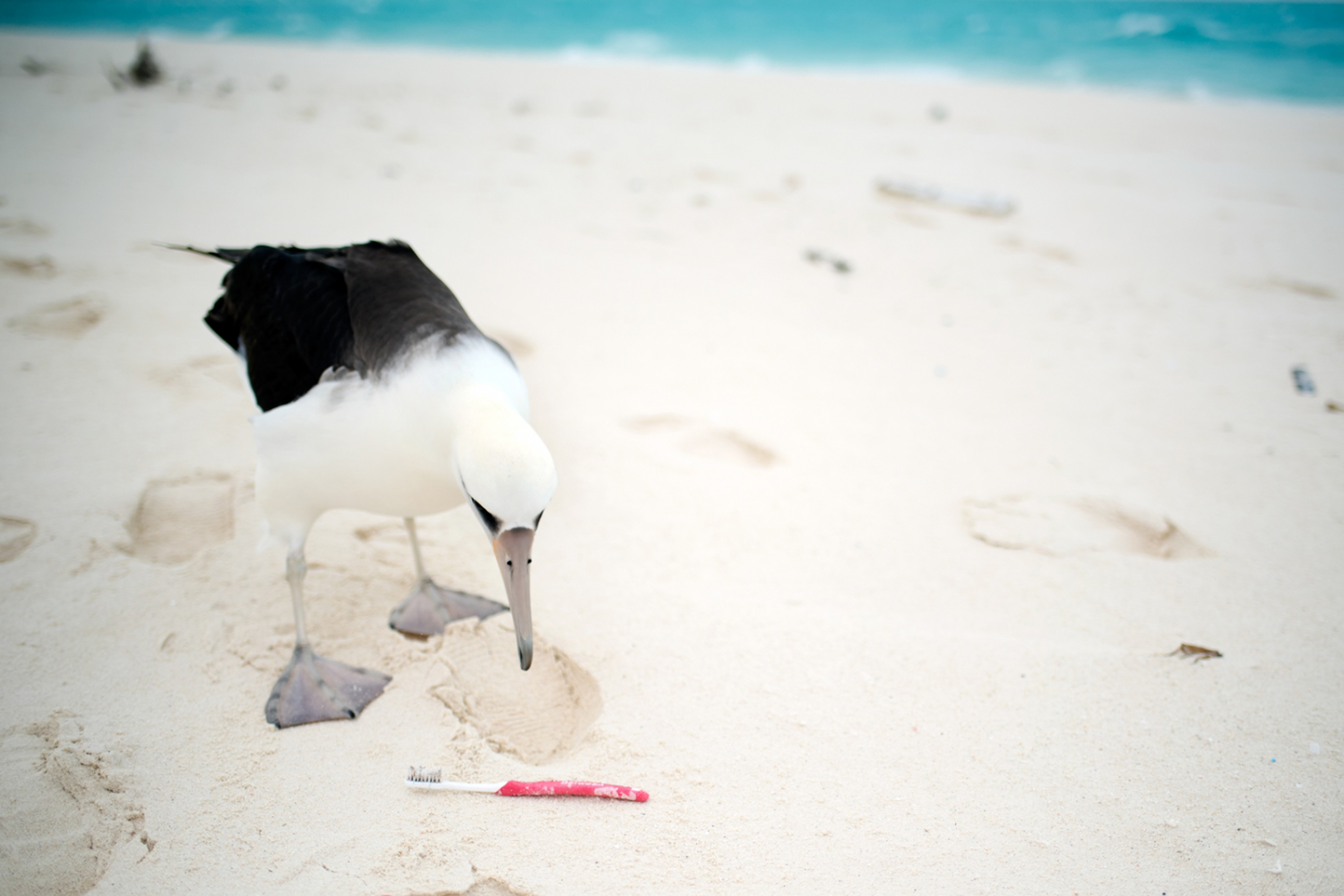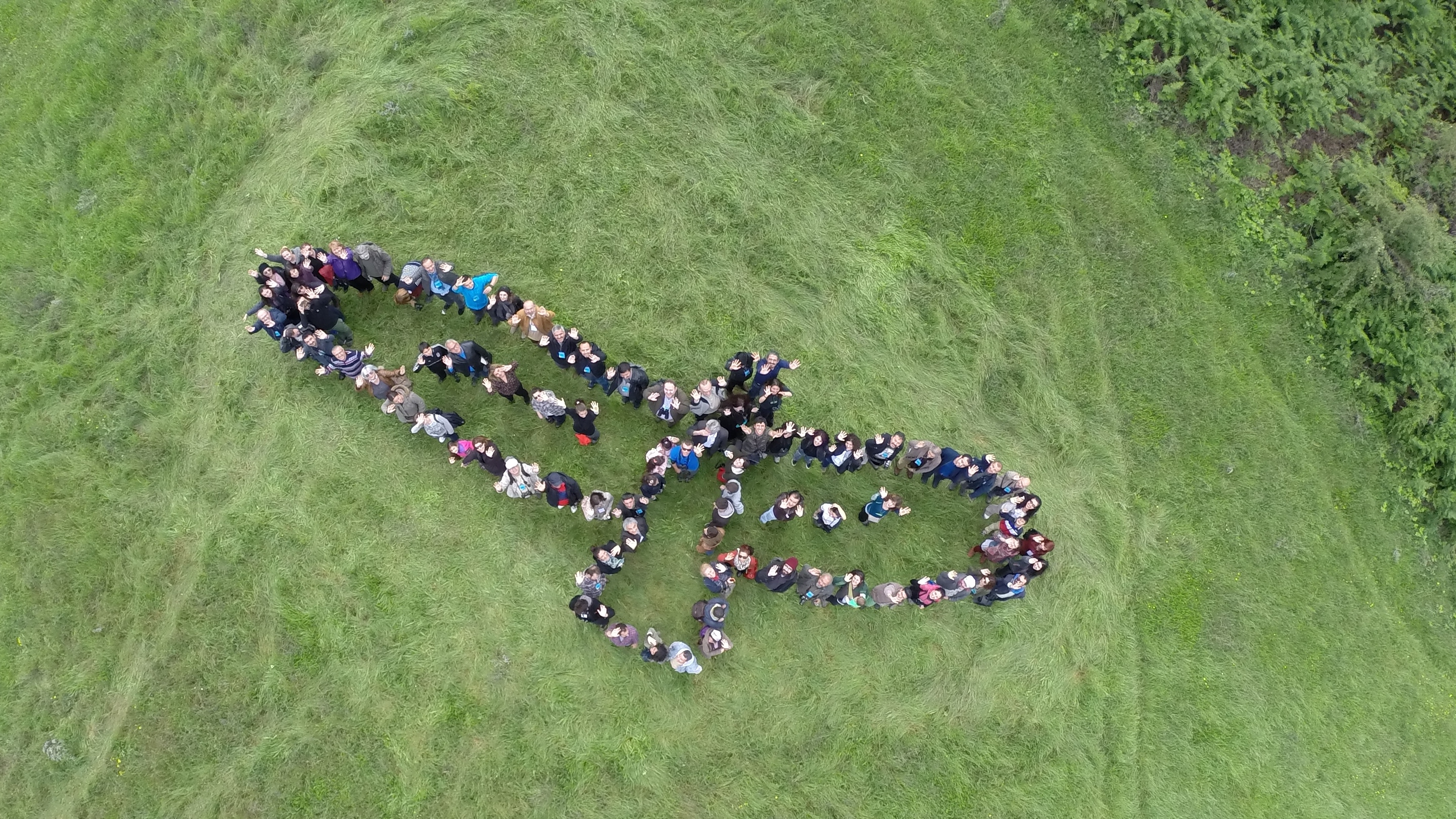
Albatross: © NOAA CREP
With an annual production of more than 300m tonnes, plastic is one of the most widely used materials in the world. What often escapes one’s attention is that the plastic is used for its main purpose for only a moment compared with its life-cycle of 20 to 500 years. Lightweight and designed to last, the discarded pieces are easily transported to ecosystems through the forces of nature, causing serious threats to migratory species around the world. To make matters worse, plastic does not simply dissolve. Broken down into small particles by water, sunlight and wind, it often leads to lethal cases of ingestion and entanglement.
Sadly, having wings does not help birds escape the threat of plastic. Dead chicks with stomachs full of plastic, entangled and smothered by plastic rings and nets are all too real consequences of the toll that plastic takes on birds and other wildlife.
The number of seabirds dying from the effects of plastic every year is currently 1 million and growing. Existing research pinpoints the urgency of the matter: in just two decades between 1960 – 1980, the number of birds found ingesting plastic has grown from 5 per cent to 80 per cent.
The international community needs to take urgent action to mitigate unnecessary injuries to and mortality of migratory birds due to plastic pollution. World Migratory Bird Day 2019 is a unique chance to join efforts to address the serious problem of plastic pollution and highlight its negative effects on migratory birds. Let’s unite our voices to address this rapidly growing environmental concern!
About World Migratory Bird Day:
As an annual awareness-raising campaign highlighting the need for the conservation of migratory birds and their habitats, World Migratory Bird Day (WMBD) has a global reach. Every year, on the second Saturday in May and October, people around the world organize public events such as bird festivals, education programmes, exhibitions and bird-watching excursions to celebrate WMBD.
The Convention on Migratory Species (CMS), the African-Eurasian Waterbird Agreement (AEWA), and Environment for the Americas (EFTA) have joined forces to strengthen global recognition and appreciation of migratory birds. The East Asian-Australasian Flyway Partnership (EAAFP) is taking an active role in promoting WMBD along the East Asian-Australasian flyway and is in the process of working closely with CMS, AEWA and EFTA in becoming an official partner of WMBD in the near future.

Bird Silhouette: © UNEP/CMS Secretariat
How can you participate?
If you are interested in organizing an event to help address plastic pollution and celebrate migratory birds, register your planned activity with us! In this way, individual events can be shared with others around the world and help inspire them to take action too.
Find out how you can participate: www.worldmigratorybirdday.org
Register your events: https://www.worldmigratorybirdday.org/register-your-event
Follow us on social media!
Twitter: twitter.com/WMBD
Facebook: www.facebook.com/worldmigratorybirdday
Instagram: www.instagram.com/worldmigratorybirdday/




